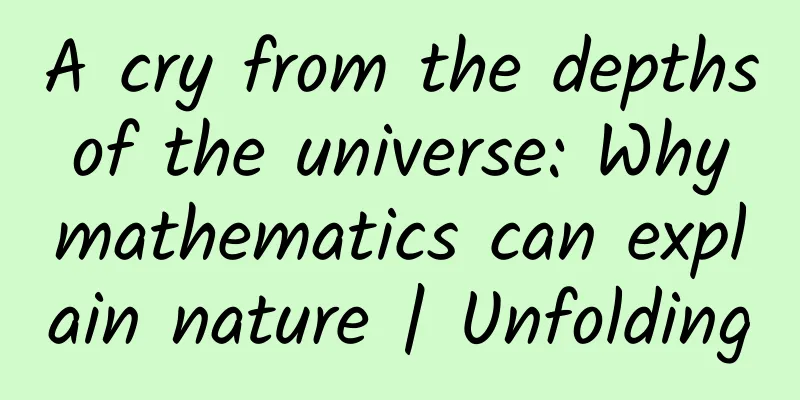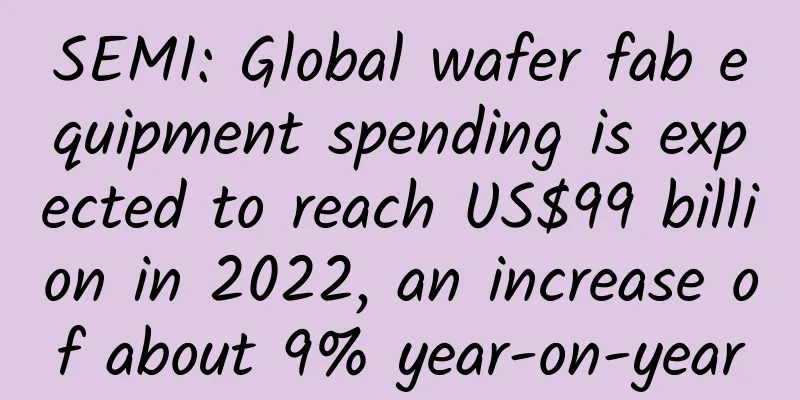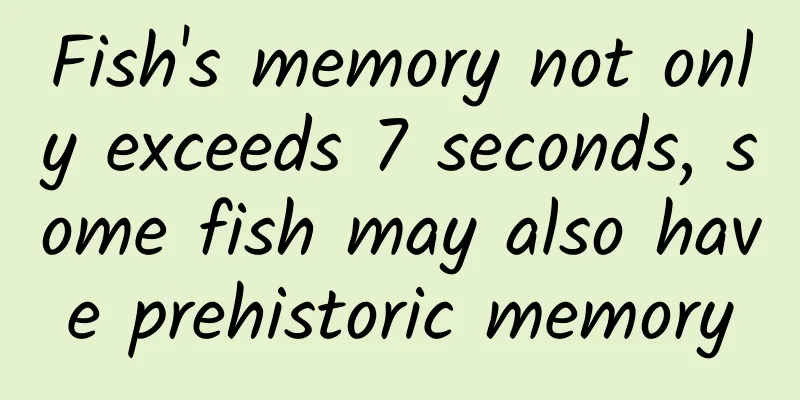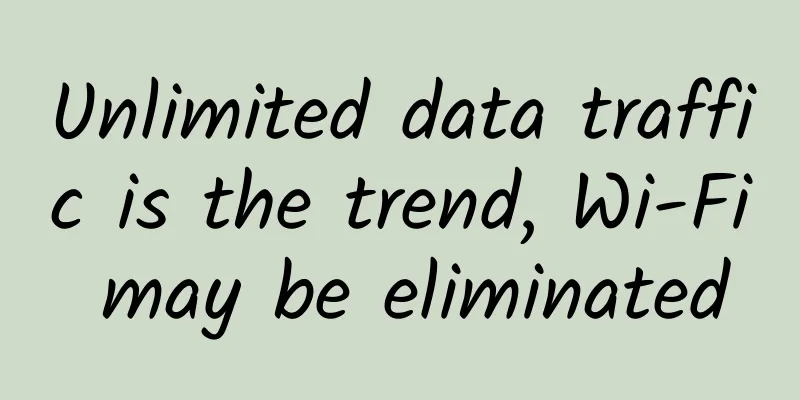A cry from the depths of the universe: Why mathematics can explain nature | Unfolding

|
Where does the universe come from? People try to answer this question by looking at the origins of space, time, and matter. However, there is another side to this question: how are the various laws of nature, which are expressed through the operation of matter and the rules for the operation of all matter in the universe, "formulated"? In his work "Make a Universe: The Origin of Natural Laws," the famous chemist and popular science writer Peter Atkins looks at this side of the question and tries to explore the effectiveness of mathematics in the standardized expression of natural laws and its possibility of revealing the deep structure of reality. This article is authorized to be excerpted from "Creating a Universe: The Origin of Natural Laws" (March 2023 edition, Commercial Press), with deletions and modifications, and the title is added by the editor. Go to "Fanpu", click "Reading" and post your thoughts in the comment area. By 24:00 on May 27, we will select two comments and give each person a book. By Peter Atkins Translation | Su Zhan Many laws of nature can be expressed in mathematical form, including laws whose contents have nothing to do with mathematics (such as the laws that have been summarized to describe evolution by natural selection, no matter what they turn out to be), which can gain greater power when reinterpreted mathematically. One of the first scientists to consider this question was the influential Hungarian mathematician Eugene Wigner (1902-1995), who raised the issue in a 1959 lecture entitled "The Unreasonable Effectiveness of Mathematics in Natural Science." With perhaps wise caution, he concluded that the unreasonable effectiveness of mathematics is a mystery too profound to be solved by human reflection. Others have furthered the general sense of despair by suggesting that among the various unsolved mysteries currently, this one is likely to remain the one. Another view, a more optimistic one than Wigner's cautious pessimism, is that mathematics is not inexplicably valid, that it is not creating confusion but that it provides an important window into the deep structure of the universe. Mathematics may be the universe's attempt to speak to us in our common language. In this chapter, I will try to dispel the mysticism that this claim might seem to have - I hope it doesn't. The fact that there are mathematical versions of the laws of nature may point to a serious question about what the deep structure of reality might be, and give us hope for a rewarding answer. Perhaps it points to that deepest question, the most puzzling and fascinating of all questions: how did things that exist come to exist? It is undeniable that mathematics is a language of exceptionally effective and successful dialogue with the universe. At the most pragmatic level, we can predict the numerical consequences of physical processes from equations summarizing the laws of physics, just as we can predict the period of a pendulum from its length. Witness the astonishing ability of astronomers to predict the orbits of the planets, the incidence of solar eclipses, and the appearance of supermoons. Then there are the unexpected consequences that emerge from the laws expressed in mathematical form and are verified by observation. The most famous of these is the prediction of black holes by someone who heard Einstein's general theory of relativity. It is also said, ironically of course, that if an experimental observation cannot be supported by a theory expressed in mathematical form, it cannot be accepted. The world economy rises and falls in the pursuit of mathematically expressing the laws of nature. A very large proportion of the industrial output of various countries is now attributed to the implementation of quantum mechanics and its mathematical form. Of course, there are aspects of our understanding of the universe and our physical interpretation of it that have not yet been expressed in mathematical form. In the opening paragraphs of this book, and in the few sentences I have just mentioned in passing, I have drawn attention to one of the most far-reaching theories of the universe, the theory of natural selection, which explains evolution. This theory is not mathematical in its intrinsic nature, in the sense that it is not expressed in formulaic form, but it nevertheless has enormous power, perhaps to apply to any place in the universe where there is something that can be considered "life." Even not just to the emergence of new species, but to the emergence of whole new universes. We can express this theory as a law of nature, for example, Herbert Spencer's "survival of the fittest" is a crude but sharp approximation. But once we do a little mathematical development of the theory, such as modeling the dynamics of biological populations, as I will soon see, the qualitative version of the theory immediately acquires an unfathomable, quantitative richness—by which I mean that it will be able to make quantitative predictions. Biology, as a whole, is perhaps a less prominent area of the mathematical exposition. This branch of human knowledge was largely a matter of wandering around in nature until 1953, when Watson and Crick determined the structure of DNA, almost instantly transforming biology into a part of chemistry, and thus into a member of the physical sciences, with all the power that comes with that status. Having said that, it is difficult to point to specific mathematical biological laws, except (back to DNA) the laws of inheritance, including the laws of coding. There are, however, several different candidate examples of the direct role of mathematics in biology. These include the analysis of the number of predators that have a chance to catch prey, and the somewhat similar work of designing fishing and harvesting strategies. There are also various periodic phenomena, which are typical of living organisms, and if we look back at ourselves, breathing, heartbeat, and, to a lesser extent, the 24-hour physiological cycle, we will confirm this, and these periodic oscillations can be described mathematically. Likewise, fluctuations in numerical differences, such as the difference between the number of infected and uninfected people in an epidemic, in electrical potential differences—like those that occur as signals travel along nerves when we think and act, and in the muscle activity of a fish that automatically bends its body (even after its head has been cut off) to propel itself through the water in response to lateral waves—are also objects of study that exist in all aspects of biology and can be treated mathematically. Alan Turing (1911-1954), a genius who tragically fell victim to rumors, was perhaps the first to debunk the beautiful fables told by the supposedly ugly Aesop (who probably lived 629-565 BC, if he ever existed) by showing how diffusion waves of chemicals in containers of various shapes can be treated mathematically, a work that explains how patterns on animal fur are formed, including leopard spots, zebra stripes, giraffe patches, and the intricate and beautiful textures on butterfly wings. Even the long trunk of an elephant is formed by diffusion waves of chemicals throughout the elephant's early embryo according to mathematical laws expressed by various equations and their solutions. Sociology emerged in the late 18th century as a refinement of biology applied to the study of human groups, although it was often modeled on mice. Emmanuel-Joseph Sieyès (1748-1836) coined the term in 1780, but the discipline did not gain much traction until the late 19th century, and did not acquire its mathematical structure until the 20th century, when complex statistical models could be studied numerically on computers. Although the early impetus for the discipline was to identify laws about human behavior, its most significant achievement has been the development of statistical methods for analyzing—and sometimes predicting—the most likely or average behavior of large groups of individuals. This statistical modeling work is essential for the efficient operation and management of society, but no fundamental laws, other than those inherent in statistics itself (such as the bell-shaped distribution of random variables), have emerged from these models, despite the great desire to find them. Theology—the study of gods whose nature is elusive and incomprehensible, the academic version of the search for the mysterious smile of the Cheshire cat—does not need mathematics. Nor do the other, far more positive things produced by the working brain, such as poetry, art, and literature—even though these masterpieces are fascinating and sometimes horrifying fantasies that add much to the mundane world. Statistics is an exception, though, because it can help us distinguish Marlowe from Shakespeare. And music may be right on the border, a starting point for an aesthetic science in which mathematical insights may prove invaluable, through the examination of chords and sequences of notes—which some have suggested are related to possible resonant circuits in the brain. I have to narrow the scope of this explanation now. Although there are so many different applications of mathematics listed above, they are not laws in themselves. In addition to the numerical analysis of data pursued by statistics, the mathematical part of each of the above cases (I think) includes the analysis of some kind of model. This is not the content of the basic laws of nature, but an expression of some basic physical laws hidden behind it, which are combined in a very complicated way. They are not even external laws, but just a bunch of organized external laws to perform a specific task. At the simplest and most obvious level, mathematics works because it provides a cold, highly rational way of presenting the consequences of an equation that represents a law expressed in symbolic form. It is impossible to make reliable predictions from a nonmathematical statement such as "survival of the fittest," much less that an initial combination of elements will lead to the evolution of an elephant in due course. In contrast, we can make reliable predictions from a mathematical statement such as Hooke's law that the restoring force is proportional to the displacement (a literal statement of the equation F = -kfx): we can accurately predict the period of a pendulum from its length. I hear you shouting “chaos”. It is true that some systems can behave in ways that are seemingly unpredictable, but this unpredictability must be interpreted with caution. A simple example of a system that exhibits chaotic motion is the “double pendulum”, a single pendulum with another pendulum attached to its base, both swinging in accordance with Hooke’s law. In this case, the equations of motion for both pendulums can be solved, and their angles at any future time can be predicted with certainty, provided that the initial angles at which the pendulums are pulled back are known with certainty. The key phrase here is “provided that the initial angles at which the pendulums are pulled back are known with certainty”, because even an infinitesimal inaccuracy in the initial angles can lead to very different results later in the process. A chaotic system is not a system that behaves without regularity: it is a system that is highly sensitive to initial conditions, making its subsequent behavior unpredictable for all practical purposes . If we had perfect knowledge of the initial positions (in the absence of external perturbations such as friction and air resistance), we would get completely predictable behavior. One consequence of this inherent failure of prediction to match observation in practice is a shift in the meaning of what is called experimental confirmability in science. The procedure of comparing predictions with observations and revising theories based on failures has long been considered one of the cornerstones of the scientific method. But now that we see that reliable predictions are not always possible, has that foundation been eroded? Not at all. The “global” predictions of chaotic phenomena modeled can be verified by testing the system under different starting conditions, and indeed, “chaos” itself has certain predictable properties that can also be verified. We do not need to predict and verify the exact trajectory of the double pendulum to claim that we understand the system and have verified how it behaves. The laws of nature, in this case a set of external laws, will be verified even in this unquantifiable system. The human brain is a chain of processes far more complex than the mechanical trivia of a double pendulum, so it is hardly surprising that its output—an action or an idea, or even a work of art—cannot and probably never will be predictable from a given input—a glance at something, or a phrase heard. Theologians call this unpredictability “free will.” As with the double pendulum, but on a far more complex scale, we can claim to understand how a brain works, in terms of the network of processes going on in it—whether that brain is artificial or natural—even if we can never predict the ideas it might have expressed, the poems it might have written, or the massacres it might have committed. So in a sense, the existence of “free will” confirms that we understand how the brain works, just as the existence of chaos confirms that we understand how the double pendulum works. Though it may be a little too much to hope for, just as the patterns of chaos are predictable for simple systems, so too may patterns of free will be discovered one day. Perhaps, through psychiatry, they have already been discovered, but have simply not yet been precisely formulated in a formalized form. The cold rationality of mathematics may be the whole secret of its incredible effectiveness. Its effectiveness may not be so incredible: it may lie in its reasoning, in its status as a model of rationality. The reason mathematics works may be simple, because it emphasizes the systematic nature of its procedures: start with a model, set up a few equations about its properties, and then use the time-tested tools of mathematical deduction to make the consequences come out one by one. That may be all. But could there be more? There are other hints that the world may be mathematical in a deeper sense. My starting point here is a remark by the German mathematician Leopold Kronecker (1823-1891), who said: "God created the integers, all the rest are created by man." So the whole beauty of mathematics is the operation of entities - integers - that make them into things that people did not intend them to be - just plain, conventional numbers. But where did the integers come from? - If we don't consider the overly simplistic answer of "God's generosity". Integers could have emerged from absolutely nothing. The procedures for generating them belong to that half-dead area of mathematics called set theory, the theory that deals with sets of things without paying much or any attention to what the things are. If you don't have anything, then you have something called the empty set, which I'll call {{Ø}}. I'm going to call it 0. Suppose you have a set that contains the empty set, which I'll call {{Ø}}. Now you have something in your hand, and I'll call that something 1. Maybe you can see what's going to happen next. Then you can have a set that contains not only the empty set, but also the set that contains the empty set. Let's call that set {{Ø}, {{Ø}}}, and since it has two members, I'll call it 2. Now you can probably see that 3 is {{Ø}, {{Ø}}, {{Ø}, {{Ø}}}}, the set that contains the empty set, the set that contains the empty set, and the set that contains both the empty set and the set that contains the empty set. I won't bore you with 4, let alone the more complicated numbers, because the program should be pretty clear by now. What it does, of course, is generate integers from absolutely nothing (the empty set). Once you have integers and you force them to jump through hoops, as Kronecker said, you end up with mathematics. Now, this process is obviously analogous to the emergence of the universe from absolute nothing, where "nothing" corresponds in some way to the empty set, {Ø}. But this may just be an attractive analogy, and have nothing to do with the emergence of the universe, mathematical or not, from nothing. Even if it is, then again, the analogy may represent a profound insight into how much it looks like there is something here, and why mathematics is so successful as a language for describing and explaining this something. I can see several problems with this analogy. These include the lack of rules that explain how integers are connected to the structures we call "mathematical." Also, a list of integers is hardly worthy of the name "universe." The answer here may lie in the axioms that have been proposed as the basis of arithmetic. These include several famous axioms proposed by the Italian mathematician Giuseppe Peano (1858-1932). Once you have arithmetic, you have a lot of other things, because there is a famous theorem attributed to the German Leopold Löwenheim (1878-1957) and the Norwegian Thoralf Skolem (1887-1963), which implies that any axiom system is equivalent to an arithmetic system. So if you have a theory of all the laws of nature built on a set of assertions (axioms), then it is logically equivalent to arithmetic, and everything that is said about arithmetic applies to it as well. So a rather bold conjecture might be that some logical relations similar to those proposed in Peano's axioms happened to be related to the entity that emerged from nothing and gave it stability. Obviously, I am trying to find meaning here in a blind way, but any reliable interpretation of the above perspective, if there ever will be one, will have to wait until further progress is made in understanding and explaining the origins of our universe. For now, these ideas are just fanciful. One big question, of course, is what do we mean when we say that the universe is mathematical? If it's all just arithmetic, then what is it that I'm touching? If it's all just algebra, then what is it that I'm seeing through my window? Is my consciousness just a collection of integers dancing to the music of axioms? Is causality something like, or actually, the process of writing out proofs of theorems? Touch anything. Are we in some sense touching √2 or even pi itself? Perhaps I can help you see that you are. If we set aside the neurophysiological aspects of touch, which are what happens inside our bodies when we make contact with external objects (I know you might say, "But that's what touch is all about, our minds respond to it!" Hold on), then touch is ultimately about the inaccessibility of the touched relative to the toucher. Inaccessibility is a kind of repulsion created by a region of space, which makes sense where the signal that transmits the sensation of "touch" to the brain or afferent neural reflex circuit originates, and it is this signal that makes us pull our hand back to avoid possible danger or the next consequence of touch - injury. The repulsion of one object by another grows out of a very important principle, proposed in 1925 by the Austrian-born theoretical physicist Wolfgang Pauli (1900-1958), and generalized in 1940, winning him the 1945 Nobel Prize in Physics. This is an intrinsic principle of quantum mechanics that concerns the mathematical description of electrons (and certain other elementary particles), and asserts how that description must change when one interchanges the names of two electrons. A corollary of this principle is that the electron clouds of two atoms cannot mix: one atom is repelled from the region occupied by the other. Thus, touch emerges from a fundamental principle of nature. While I admit that this perspective on touch still does not quite get to the heart of the question of what touch means mathematically, I hope you will agree that it is a step toward that goal. Hearing is a form of touch. In this case, the key receptor is located inside the ear, and what comes into contact with it is the air molecules that condense into pressure waves and impact the eardrum. This detector transmits the detection of this contact to a different area of the brain, which is why we think of hearing as a different sense from touch; but fundamentally, it is not. Vision is also a sense of touch, just a subtler and more hidden one. In this case, the contact occurs between light receptor molecules in the rods and cones of the retina. These receptor molecules are embedded in a cup-like protein base, which changes into a different shape when stimulated by photons in light. At this point - again because of the contact - the protein base can no longer accommodate the receptor molecules, and the receptor molecules jump out, causing the protein to deform slightly, triggering a pulse signal that is transmitted to a different area of the brain, where it is interpreted as part of the visual image. Smell and taste are also different aspects of touch—this time (so it is thought, though the mechanism is still debated) molecules that hit the receptors are breathed into the nose or land on the tongue, triggering signals that are sent to yet another part of the brain. All senses are ultimately touch, and all touch is a manifestation of the Pauli principle that describes the mathematical nature of the world. I must admit, as I have already half admitted, that this explanation that sensations are manifestations of a minor mathematical conclusion is unlikely to be convincing, and I dare not ask what the trigger signals are that are sent to the dark and mysterious brain and the pathways that the brain uses to transform sensations into consciousness. How can such an explanation be convincing before we truly understand the deep nature of matter? Nevertheless, I hope that it is at least a hint that we will eventually establish a close relationship with integers and the reality organized by them. There is one last important matter, a matter of life and death. On which side does Gödel's theorem stand? Gödel's theorem was proved in 1931 by the Austrian-born mathematician of the same name, Kurt Gödel (1908-1978), in a remarkable masterpiece. Essentially, the theorem asserts that the self-consistency of a set of axioms cannot be proven within the set of axioms. If the laws of nature are mathematical, does that mean they might not be self-consistent? Are my interpretations of them doomed to systematic failure? If the universe is a giant mathematical model, is it not self-consistent as well? Is it possible that it collapses under the weight of its own inconsistencies? There are several escape hatches from this situation. Gödel’s proof is based on a particular formalism of arithmetic, the version of arithmetic that I described in detail in Note 4. If you throw out one of these statements, say the one about what multiplication means, then you knock a leg off Gödel’s proof and it breaks down. Arithmetic without “×” may seem a little strange, but perhaps you can make 2×3 different from 3×2, as I did in Chapter 8, and still prove it to be key to understanding the physical world. Take multiplication out of arithmetic, and Gödel is trapped in a sinking boat, watching the other ships race by, and arithmetic becomes complete. Who knows what might happen if you go one step further and make 2+3 not have the same value as 3+2? Anyway, the bottom line is that, despite Gödel's theorem, it is far from clear whether the conditions under which Gödel established his proof apply to the physical world (the only world), so pessimism is unfounded, and the laws of nature may be perfectly self-consistent, and there are ways to verify that - it can be proven that this is the case, and there is nothing hidden in the universe that can - in an instant - spread catastrophically and completely obliterate us and everything in the world, turning it into a wisp of oblivion and returning to the logical fault line of the absolute "nothing" from which we originally emerged. Moreover, it is very likely that only globally consistent laws of nature are feasible, and the universe may be a very logically tight structure that does not allow any inconsistency or incoherence and the arithmetic type that matches it. There are other issues to this. Some people have a pessimistic view that if we do someday discover a theory of everything, a universal, all-encompassing mother theory—not just the mother of all internal laws, but the mother of all laws—the consequences would not be very good, because it would suggest that it is time for humans to hang up their slide rules and rest on their laurels with a complete understanding of the internal and external laws of everything—but there might still be something left for us to do. For example, we might find that there are two or more equally successful descriptions of everything, and we cannot choose between them. We have already encountered some of this possibility, because, as I explained in Chapter 8, it is possible to write a description of the world in terms of position alone or in terms of momentum alone. There is no "better" description of the world. There may be countless seemingly irreconcilable but equally valid descriptions of the world waiting to be discovered, countless sets of mutually consistent but seemingly unrelated natural laws. Will we know that we have discovered all the laws of nature when we have discovered them all? Will we know that a particular theory of nature is valid even if experimental verification of it is beyond our ability, both technically and in principle? Should we be cautious about relaxing our insistence on strict experimental verification standards for all the laws that are supposed to be discovered, or should we remain vigilant, waiting for violations of our laws even if we are sure that such violations will never occur? At these frontiers of knowledge, we will need robots that are always restless, tireless, and vigilant to serve as nature's testers. Should we accept the view (as some contemporary fundamental theories suggest; I have in mind string theory) that we are so confident in our theories that we should accept them as true even if we cannot test them? Is our incremental exploration of nature's laws a fatal step towards overconfidence? Whatever the future holds, it's good to know that, as far as we can see, the universe is a reasonable place, even governed by laws whose origins are within human comprehension. Still, how I long to replace the assertion that "not much" happened at creation with that infuriating vision. Not "not much," but nothing at all. About the author/translator About the Author: Peter Atkins (1940- ) is a famous British chemist, chemical educator and popular science writer, a member of the Royal Society, and a researcher at Lincoln College, Oxford University. He has published nearly 70 works, including the world-renowned textbook "Physical Chemistry", and popular science works "Galileo's Finger", "Four Laws of the Universe", "Creation", "Re-Creation", etc. Atkins has served as a visiting professor in France, Israel, Japan, China and New Zealand. He is the founding chairman of the Chemical Education Committee of the International Union of Pure and Applied Chemistry (IUPAC) and won the Grady-Stack Science Communication Award from the American Chemical Society in 2016. About the Translator: Su Zhan , PhD in Philosophy from Beijing Normal University, Associate Professor of the School of Humanities at the University of Chinese Academy of Sciences, focuses on the history of physics and philosophy of physics. He has published books such as Science, Technology and Society in Eleventh Century China and translated books such as The Extended Ruler of All Things. Special Tips 1. Go to the "Featured Column" at the bottom of the menu of the "Fanpu" WeChat public account to read a series of popular science articles on different topics. 2. Fanpu provides a function to search articles by month. Follow the official account and reply with the four-digit year + month, such as "1903", to get the article index for March 2019, and so on. Copyright statement: Personal forwarding is welcome. Any form of media or organization is not allowed to reprint or excerpt without authorization. For reprint authorization, please contact the backstage of the "Fanpu" WeChat public account. |
<<: I guess 99% of people use eye drops incorrectly. If you don't believe me, just look at it.
Recommend
Li Jiaqi and Pop Mart community operation guide!
Communities are one of the indispensable channels...
APP promotion: Ten methods used by experts to attract traffic, how many of them do you know?
There are a lot of them, so be patient and choose...
The archaeological work of the South China Sea shipwreck has officially started, revealing the other side of underwater archaeology
Chinese ancestors have a long history of using ri...
The worst outcome for LeTV is that Jia Yueting loses control. How can the stock price collapse?
After writing the article, I suddenly realized th...
Suning, Banma Network, and Huawei gathered at the Guangzhou Auto Show to promote GAC Aion
On November 20, the 18th Guangzhou International ...
Smartphones: The momentum is not diminishing and will continue to be popular
From a geek toy when it first came out to a porta...
How much does it cost to attract investment in Lanzhou Entertainment Mini Program? What is the investment price for Lanzhou Entertainment Mini Program?
Starting a business requires costs, and mini prog...
2020 Teacher Gu's Modeling and Color Intermediate Class
2020 Teacher Gu's Modeling and Color Intermed...
Apple is stealing money again: AirPods headphone battery replacement costs more than 1/4 of the total price
Recently, Apple officially released its own wirel...
Completely heartbroken! Apple doesn't care about MacBook Pro screen corruption
AppleInsider has learned from a source familiar w...
After the new regulations of TikTok, here are the secrets to double the traffic of new accounts on dou+!
Recently, Douyin released an important announceme...
Small size but big surprises: ZTE Nine City "Fans' Stick" review
Speaking of FUN BOX, I believe most domestic play...
As a mechanic, he is obsessed with land. He bravely ventured into uninhabited areas just to create the "Oasis Miracle"
“The area of desertified land in my country is ...
Is the nuclear radiation from CT scan, a magical tool for cancer detection, very harmful? Nuclide: I am innocent...
The "nuclear" thing has long been widel...
In the early stages of "entrepreneurship", when young ants are infected, what will the queen ant do? People have observed two phenomena
Produced by: Science Popularization China Author:...









